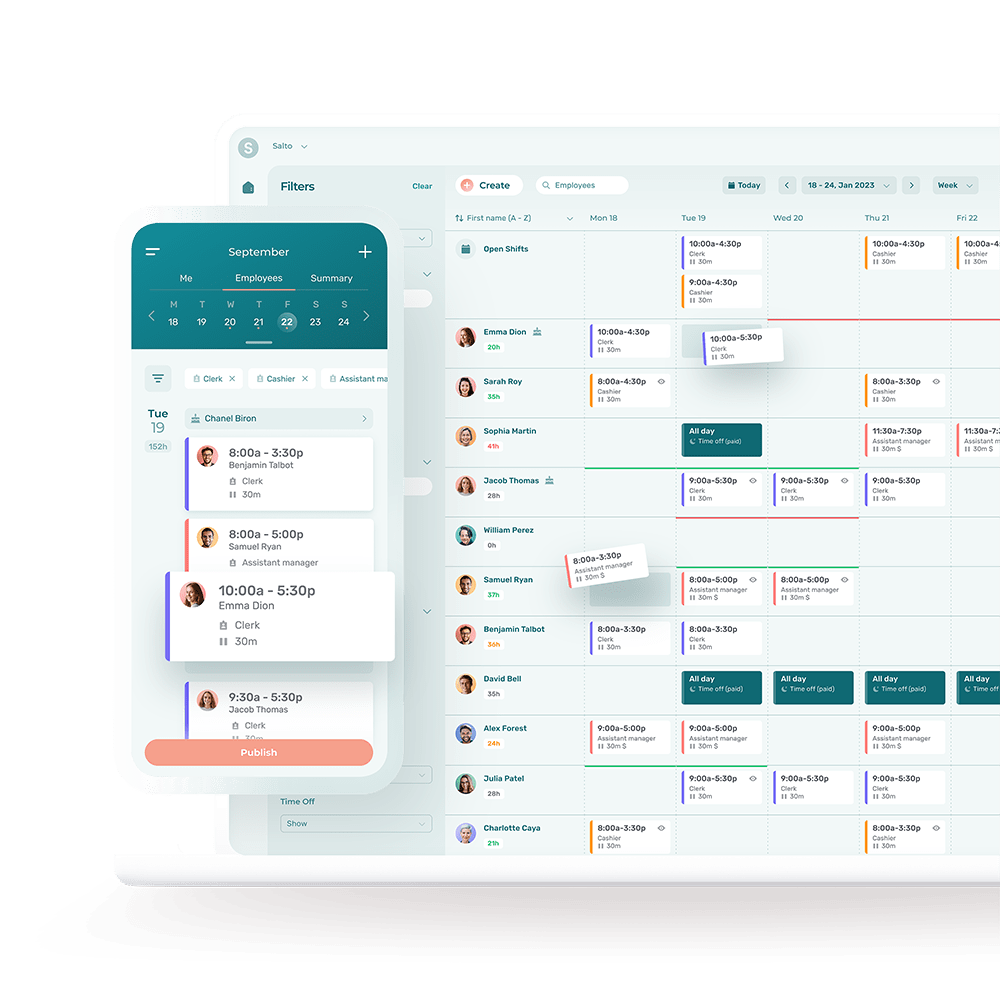One of managers’ most important roles is giving effective feedback to their employees.
While providing positive feedback is a cakewalk, criticism is another story. Negative feedback per se must be banished if you want employees to improve and learn from their mistakes.
Here at Agendrix, we see mistakes as normal occurrences and learning opportunities. That’s why we regularly hold individual meetings involving both positive and critical feedback.
There is much to say about constructive feedback. Here are a few key tips for your next feedback sessions.
Before Formulating Constructive Feedback
Before giving constructive feedback, ask yourself the following questions:
Is this the right time? When something feedback-worthy happens, be sure to respond quickly. Your feedback won’t have the same impact if it comes too late.
Is this the right place? Ideally, critical feedback should be given in person so you can see the employee’s non-verbal reaction, and vice versa. Above all, the conversation should be private.
What’s the point? Why is feedback essential here? Think about why your feedback will be useful and how your employee will take it.
Am I the right person to be giving this feedback? If the feedback is from another manager, can you explain it well? Do you even agree with it? Are you in an immediate supervisory position?
Giving these questions some thought will better prepare you to give complete, constructive feedback.
Our Best Tips to Become a Feedback Pro
1. Be Specific
If you want your employee to understand and receive your feedback well, you have to be specific. Focus on actions rather than personal characteristics. Don’t be evasive, but take the time to describe exactly what happened.
Make sure your feedback is measurable, observable and quantifiable. The clearer you are, the better your employee will understand the situation and the more quickly they will address it. Ultimately, the goal of the feedback is for the employee to improve and avoid repeating the problem.
I believe managers should look to teachers, who are often pros at feedback. Given that their aim is for students to improve, they’re always specific and constructive. They emphasize not mistakes, but solutions, which motivates their students, boosts their confidence, and ultimately engages them that much more in their learning and self-improvement. These principles should be carried over to the job market.
For Example
Instead of saying: “What you said about Marc yesterday was hurtful and uncalled for. It made people uncomfortable.”
Try saying: “Marc heard you when you told the others he never says anything relevant or interesting. He was hurt, and your comment brought down the atmosphere in the department.”
💡 Rather than emphasizing Marc’s behavior, this feedback points to the problem and its impacts.
2. Ask Questions
When giving feedback, always let the employee express themselves. Take the time to ask questions, especially when the situation is ambiguous. This will also help make sure the employee understands; perhaps they simply weren’t aware of your expectations… or maybe you didn’t quite grasp the situation.
Together, come up with solutions and devise an action plan if necessary, but be careful not to fall into the trap of micromanagement. Make sure you don’t end up controlling your employees’ every move all the time, as this isn’t productive for anyone.
For Example
Instead of saying: “The store wasn’t closed properly. This can’t happen again.”
Try saying: “What happened last night? The closing steps weren’t followed through, and it looks like the backroom alarm system wasn’t armed properly.”
💡 By asking questions, the manager shows they’re trying to understand what happened rather than simply reprimand the employee. This type of interaction is very clear and well-meaning.
3. Show Empathy
More critical feedback is sometimes received poorly. Despite your best efforts, you can’t control your staff’s reaction. They are entitled to their own feelings. But this shouldn’t keep you from delivering your message.
The feelings expressed by your employees inform you about how they perceive your message. This is why critical feedback should always be given face-to-face.
But that doesn’t mean it necessarily has to be done at the office. For example, you could take a walk with the employee to discuss the problem. The casual atmosphere will be more conducive to honest communication than a meeting between four walls.
For example
Instead of saying: “Don’t take it personally.”
Try saying: “I can see you’re upset.”
💡 Instead of encouraging the employee to suppress their feelings, the manager shows they recognize how the employee is affected by the situation.
4. Show You Are Open to Discussion
Giving and taking feedback go hand in hand. Your feedback won’t go far if you have trouble handling criticism yourself. This is why you should endeavour to build a strong bond of trust with your staff.
Foster open communication within your team. Encourage your employees to voice their opinions on a regular basis: they will feel you are truly listening to them, and will be more receptive to your comments afterwards.
For Example
Instead of saying: “I disagree with your comment.”
Try saying: “I hadn’t seen the situation from that angle.”
💡 This approach lets you nourish the conversation and encourages employees to give their two cents.
5. Give Positive Feedback
A study conducted by two researchers from Chicago University shows that learning from failures doesn’t always lead to improvement. It explains that people who feel personally attacked over their mistakes tend not to learn from them. The way feedback is formulated is therefore crucial.
It appears just as certain that feedback plays a decisive role in a person’s professional development. So, take time every day to acknowledge your team’s work. Be specific when giving this type of feedback; you can even do it publicly if it’s appropriate.
For Example
Instead of saying: “This is good work. Congratulations.”
Try saying: “Your customer service is impeccable. Clients think so and constantly write back to us to let us know. Congratulations on your irreproachable work ethic.”
💡 Beyond recognizing good work, this kind of feedback lets you emphasize the employee’s strengths and highlight concrete skills.
Concluding Your Feedback Effectively
Feedback isn’t over once it’s given. Follow up. See if your solutions worked, and if actions were taken.
This step, all too often overlooked, lets you see if your approach really works. It’s also a great opportunity to ask your employees for feedback.










